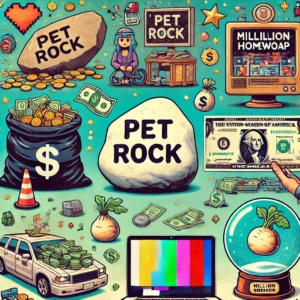Navigating relationships can be a deeply rewarding experience, but it can also come with challenges that might indicate underlying issues. Red flags are warning signs that something may be wrong in the relationship. Recognizing these signs early on can help you decide whether to address the issues, seek help, or consider ending the relationship. Below, we explore some common red flags in relationships, accompanied by real-life examples to illustrate how they might manifest.
1. Controlling Behavior
Example: Sarah and Tom have been dating for six months. Tom starts insisting that Sarah text him whenever she leaves the house and becomes upset if she doesn’t respond immediately. He begins to tell her what she should wear when they go out, criticizing her choices if they don’t match his preferences. When Sarah wants to spend time with her friends, Tom discourages her, saying he feels left out or abandoned.
Analysis: Tom’s behavior is a classic example of controlling behavior. While it might initially seem like he’s just being caring or attentive, the underlying issue is his need to control Sarah’s actions and decisions. Over time, this could erode Sarah’s independence and self-esteem, leading to a toxic relationship dynamic.
2. Lack of Trust

Example: Jessica notices that her boyfriend, Mike, frequently checks her phone without permission. He questions her about every call or message she receives, even if it’s from a friend or family member. Mike often accuses Jessica of being unfaithful, even though she has never given him any reason to doubt her loyalty.
Analysis: Mike’s lack of trust is a serious red flag. Trust is essential for a healthy relationship, and Mike’s constant suspicion creates a stressful and unhealthy environment. Jessica might start feeling like she’s walking on eggshells, constantly trying to prove her trustworthiness, which is unsustainable and unfair.
3. Disrespect
Example: Emily and Jack have been together for two years. Recently, Jack has started making sarcastic comments about Emily’s appearance and belittling her achievements in front of others. When Emily expresses how these comments hurt her feelings, Jack dismisses her concerns, saying she’s too sensitive and can’t take a joke.
Analysis: Jack’s behavior shows a clear lack of respect for Emily. Disrespect can manifest in many forms, such as belittling, mocking, or ignoring someone’s feelings and boundaries. Over time, this can erode Emily’s self-confidence and create a power imbalance in the relationship, where Jack feels superior to her.
4. Jealousy and Possessiveness
Example: Rachel has been dating Alex for a year. Whenever she mentions a male friend or colleague, Alex becomes visibly upset and starts asking questions about their relationship. He often accuses Rachel of flirting with other men, even when she’s just being friendly. Alex doesn’t like Rachel going out without him and becomes angry if she spends time with anyone else.
Analysis: Alex’s excessive jealousy is a red flag. While some jealousy can be normal in relationships, when it becomes possessiveness, it’s unhealthy. Alex’s behavior may lead to Rachel feeling isolated and controlled, as she might start avoiding social situations to prevent conflict.
5. Emotional Manipulation
Example: Mark and Lisa have been in a relationship for three years. Whenever Lisa brings up something that’s bothering her, Mark turns the conversation around, making Lisa feel guilty for bringing it up. He often says things like, “I guess I’m just not good enough for you,” making Lisa feel bad and question her feelings. Mark also downplays Lisa’s concerns, telling her she’s overreacting or imagining things.
Analysis: Mark is using emotional manipulation to control Lisa’s behavior. By making her feel guilty and questioning her reality, he’s undermining her confidence and creating a dynamic where she doubts her own feelings and perceptions. This kind of manipulation is damaging and can lead to long-term emotional harm.
6. Frequent Criticism
Example: Anna and David have been together for a year. David often criticizes Anna’s choices, whether it’s about her career, her friends, or even how she spends her free time. He tells her she’s making poor decisions and that she should listen to his advice instead. When Anna tries to explain her perspective, David dismisses her, saying she doesn’t know what’s best for her.
Analysis: David’s constant criticism is a red flag. While occasional constructive criticism can be helpful, frequent and harsh criticism is damaging. It can make Anna feel inadequate and undermine her self-esteem. A healthy partner supports and encourages growth rather than constantly putting the other person down.
7. Isolation

Example: Sophie and Dan have been dating for two years. Dan gradually starts discouraging Sophie from spending time with her friends and family, saying they don’t have her best interests at heart. He makes her feel guilty for wanting to go out without him and becomes upset if she does. Over time, Sophie realizes she’s spending almost all her time with Dan and has lost touch with many of her friends.
Analysis: Dan is isolating Sophie from her support system, a common tactic used in abusive relationships. By cutting her off from friends and family, Dan increases Sophie’s dependence on him, making it harder for her to leave the relationship if things get worse. Isolation is a serious red flag that can lead to further emotional and physical abuse.
8. Inconsistent Behavior
Example: Paul has been dating Laura for six months. Some days, Paul is incredibly affectionate and attentive, making Laura feel loved and valued. But other days, he’s distant, cold, and even unkind, without any clear reason. When Laura tries to talk about it, Paul either brushes her off or says she’s imagining things.
Analysis: Paul’s inconsistent behavior can be confusing and emotionally draining for Laura. This kind of unpredictability is a red flag, as it creates an unstable relationship dynamic. Laura might find herself constantly trying to please Paul or figure out what she did wrong, which is unsustainable and unhealthy.
9. Disregard for Boundaries
Example: Mia values her personal space and has set clear boundaries with her boyfriend, Chris. However, Chris often ignores these boundaries. He frequently shows up at her house unannounced, reads her messages without permission, and insists on knowing details about her private life that she’s not comfortable sharing.
Analysis: Chris’s disregard for Mia’s boundaries is a significant red flag. Respecting boundaries is crucial for a healthy relationship, and Chris’s behavior shows a lack of respect for Mia’s autonomy and privacy. Over time, this could lead to Mia feeling suffocated and disrespected, damaging the relationship’s foundation.
10. Verbal or Physical Abuse

Example: John and Lisa have been married for five years. Recently, during arguments, John has started shouting at Lisa, calling her names, and belittling her. One night, during a heated argument, John pushes Lisa. The next day, he apologizes, saying he didn’t mean it and that it won’t happen again.
Analysis: John’s behavior is a clear example of verbal and physical abuse. Abuse, whether verbal or physical, is never acceptable and is a major red flag that should not be ignored. John’s apology does not excuse the behavior, and Lisa should consider seeking help to protect herself from further harm.
11. Lack of Communication

Example: Karen and Steve have been together for three years. Lately, whenever Karen tries to discuss something important, like their future or a problem in the relationship, Steve shuts down. He either changes the subject, walks away, or gives one-word answers, making it impossible for Karen to have a meaningful conversation.
Analysis: Steve’s lack of communication is a red flag. Open and honest communication is essential for resolving issues and building a strong relationship. Steve’s unwillingness to engage in important conversations leaves Karen feeling unheard and frustrated, which could lead to unresolved issues and growing resentment.
12. Unequal Power Dynamics
Example: Rachel and Tom are in a long-term relationship. Tom makes most of the decisions in their relationship, from where they go on vacation to how they spend money. When Rachel tries to offer her opinion, Tom dismisses it, saying he knows what’s best. Over time, Rachel feels like she has no say in their relationship and starts to lose confidence in her own judgment.
Analysis: Tom’s dominance in decision-making is a sign of an unequal power dynamic. Healthy relationships are based on equality, where both partners have a voice and share responsibilities. Tom’s behavior undermines Rachel’s autonomy and creates an imbalance that could lead to resentment and dissatisfaction in the relationship.
Conclusion
Red flags in relationships are warning signs that something may be wrong. While some issues can be addressed through open communication and mutual effort, others may indicate a fundamentally unhealthy relationship that could be harmful in the long run. By recognizing these red flags early on, you can take steps to protect your well-being and ensure that your relationships are built on a foundation of respect, trust, and equality.





Comments are closed.